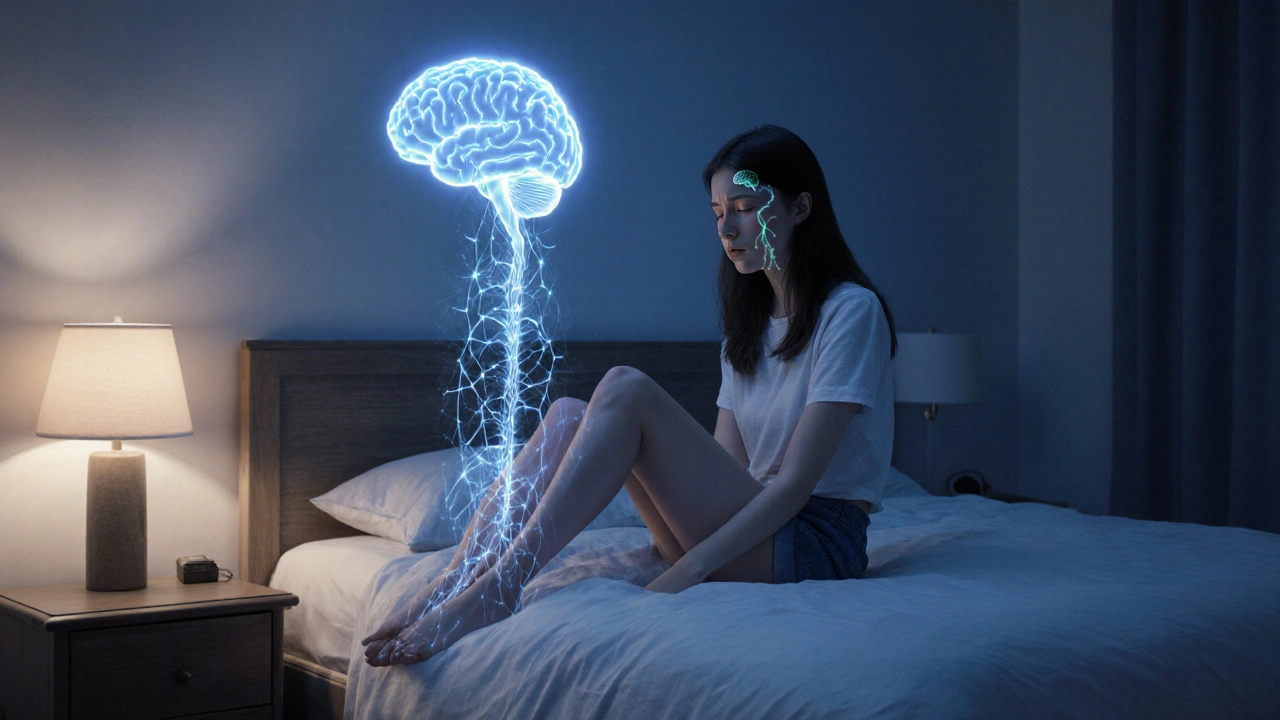Restless Leg Syndrome: Causes, Treatments & Practical Tips
When dealing with Restless Leg Syndrome, a neurological condition that creates uncomfortable sensations in the legs and an urge to move them, especially at rest. Also known as RLS, it can seriously disrupt nightly sleep and daytime comfort. One of the most common triggers is Iron deficiency, low iron levels that can worsen or even cause the leg sensations, while many patients find relief with dopamine agonists, medications that boost dopamine activity to calm the restless urges. Frequent sleep disturbance, fragmented or insufficient sleep that feeds the cycle of cravings to move the legs often amplifies the problem, creating a feedback loop that feels impossible to break.
Key factors that shape Restless Leg Syndrome
First, iron deficiency isn’t just a lab number; it directly affects the brain’s dopamine pathways, which are crucial for controlling muscle movement. When iron stores dip, the brain’s ability to regulate dopamine drops, and the legs start sending false “move me” signals. That’s why checking ferritin levels is usually the first step in a clinical work‑up. Second, dopamine agonists like pramipexole or ropinirole target those same pathways, providing a pharmacologic shortcut that many patients rely on. However, the medication isn’t a magic bullet—long‑term use can lead to augmentation, where symptoms actually get worse, so doctors often pair drugs with lifestyle tweaks. Lifestyle tweaks include regular exercise, avoiding caffeine close to bedtime, and establishing a consistent sleep schedule. Stretching routines and massage can momentarily ease the sensations, but the real win comes from aligning iron intake, sleep hygiene, and, when needed, medication. Peripheral neuropathy, another related entity, can masquerade as RLS, especially in diabetics, so a thorough nerve exam helps differentiate the two. Addressing any underlying neuropathy reduces overlapping discomfort and clarifies treatment paths. Third, the link between sleep disturbance and RLS runs both ways. Poor sleep heightens the brain’s sensitivity to restless cues, while the leg urges repeatedly wake the sleeper. Cognitive‑behavioral strategies for insomnia (CBT‑I) can break this cycle by teaching relaxation techniques, limiting screen time, and using white‑noise devices. When sleep quality improves, the severity of RLS often drops, showing how intertwined these entities truly are. Finally, other medical conditions—such as chronic kidney disease, pregnancy, or certain antidepressants—can either trigger or exacerbate RLS. Identifying and managing these comorbidities is part of a holistic approach, ensuring that treatment isn’t just masking symptoms but addressing root causes.
Below you’ll find a curated collection of articles that dive deeper into each of these areas: from detailed drug comparisons and iron‑rich diet plans to practical sleep‑hygiene checklists and neuropathy screening guides. Whether you’re starting out, looking for new management ideas, or seeking the latest research on dopamine agonists, the posts ahead cover the full spectrum of Restless Leg Syndrome care.
How Restless Leg Syndrome Impacts Mental Health: Causes, Risks, and Coping Strategies
Explore the link between Restless Leg Syndrome and mental health, uncovering biological ties, common co‑occurring conditions, and practical ways to manage both.

